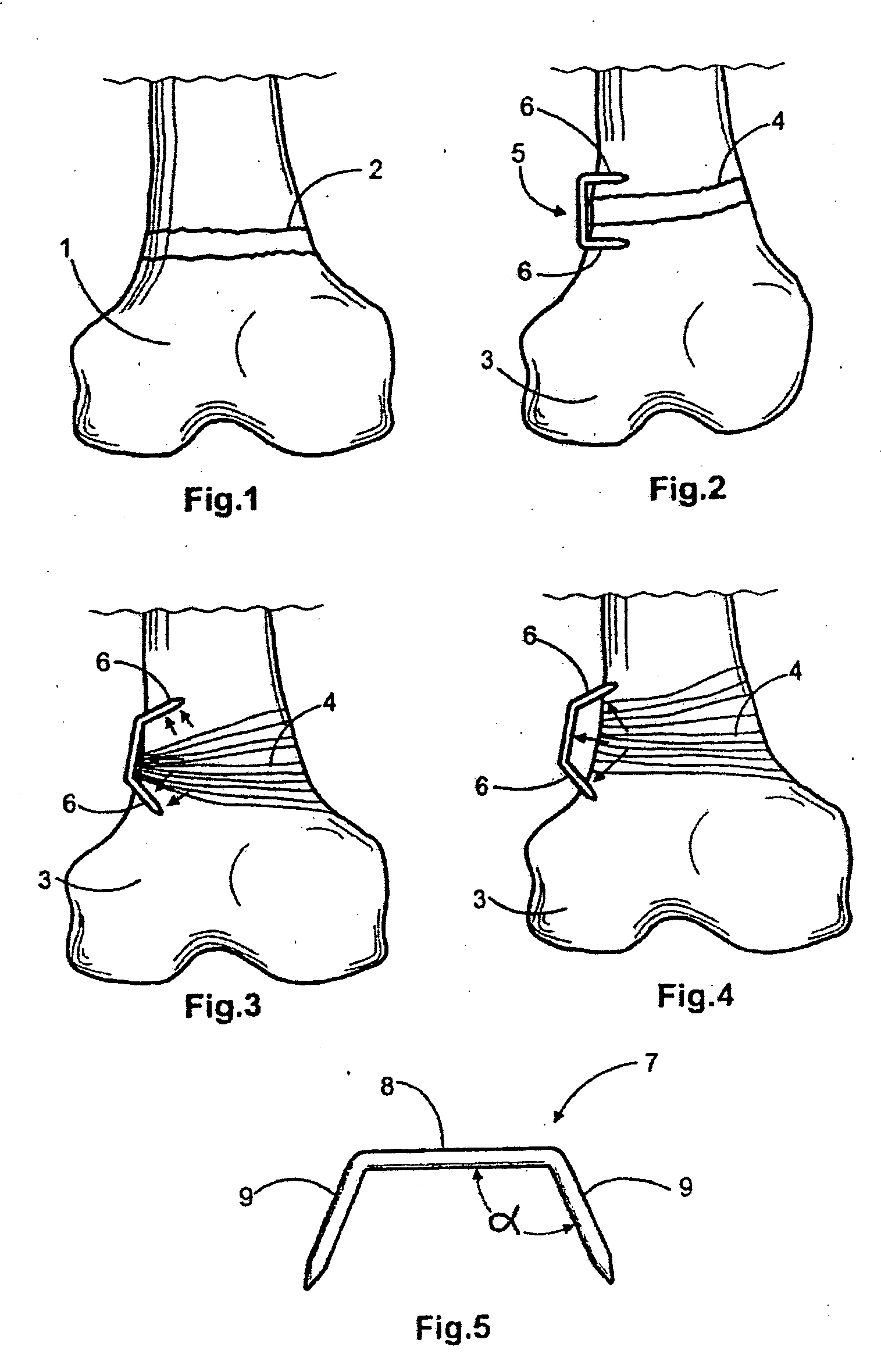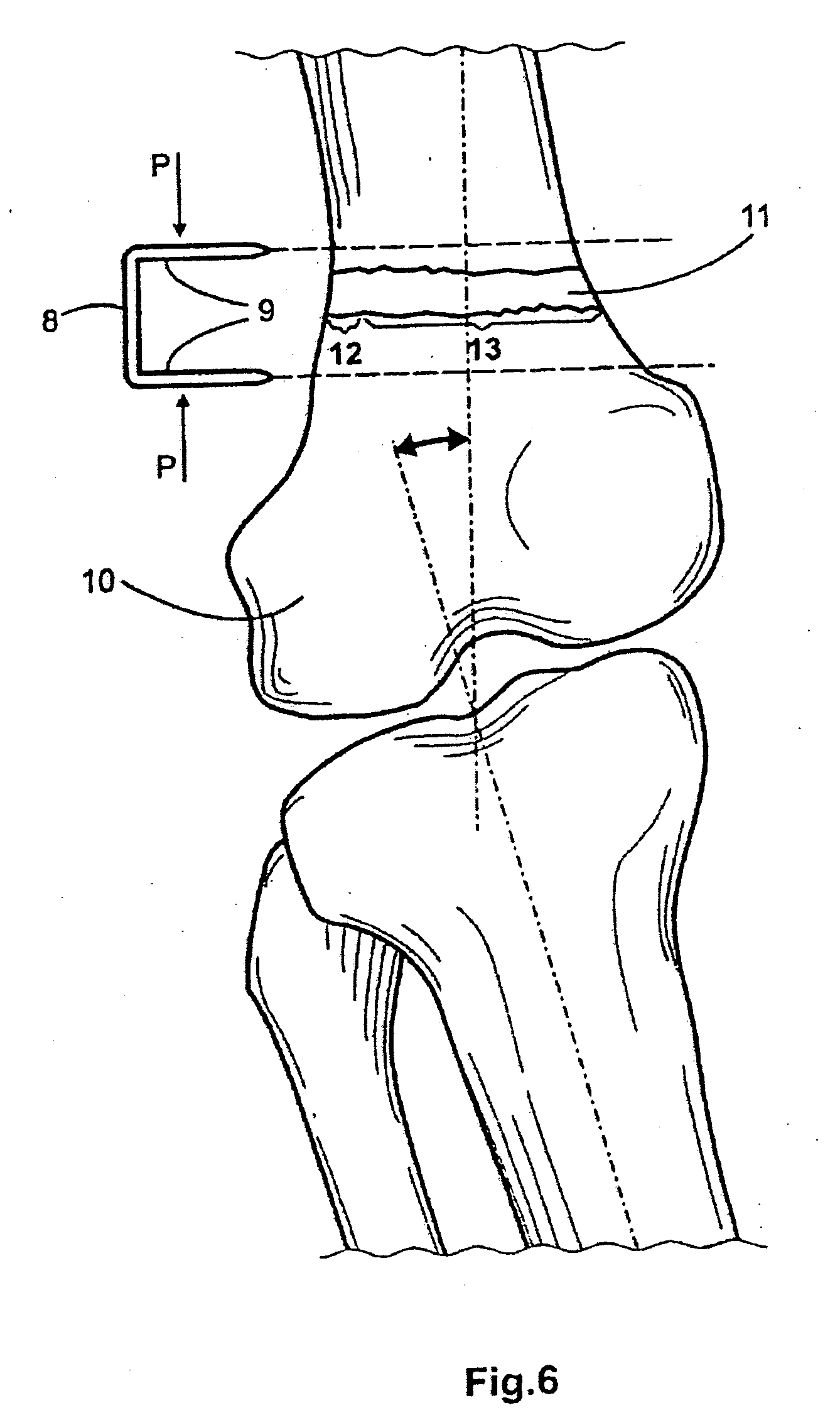Bone staple and methods for correcting spine disorders
a spine disorder and bone staple technology, applied can solve the problems of not widely and intensively imposed use of this device, not widely and widely imposed in the medical field, and not working satisfactorily
- Summary
- Abstract
- Description
- Claims
- Application Information
AI Technical Summary
Benefits of technology
Problems solved by technology
Method used
Image
Examples
Embodiment Construction
[0087] Now referring in detail to the drawings reference will be made to several alternative staples, methods for implanting the same and applications to correct different and distinct malformations and abnormalities such as in long bones, broken bones, spinal column, etc.
[0088] It may be seen from FIG. 1 a normal bone, particularly a femur head 1 having a normal epiphyseal or growth plate 2 whereby the femur growths normally along a normal longitudinal axis of the bone. When the bone, such as bone 3, includes an abnormal growth plate, an angled plate 4 as shown in FIGS. 2-4, for example, the bone tends to growth along a line deviated out from the normal bone axis, thus providing the bone with a convex side and a concave side. Depending of the location of this abnormalities the patient will be affected of a genu valgum or varum. FIG. 2 clearly shows that the left bottom portion or protrusion of bone 3 is larger than the right one, therefore a bottom bone (not illustrated) that is j...
PUM
 Login to View More
Login to View More Abstract
Description
Claims
Application Information
 Login to View More
Login to View More - R&D
- Intellectual Property
- Life Sciences
- Materials
- Tech Scout
- Unparalleled Data Quality
- Higher Quality Content
- 60% Fewer Hallucinations
Browse by: Latest US Patents, China's latest patents, Technical Efficacy Thesaurus, Application Domain, Technology Topic, Popular Technical Reports.
© 2025 PatSnap. All rights reserved.Legal|Privacy policy|Modern Slavery Act Transparency Statement|Sitemap|About US| Contact US: help@patsnap.com



